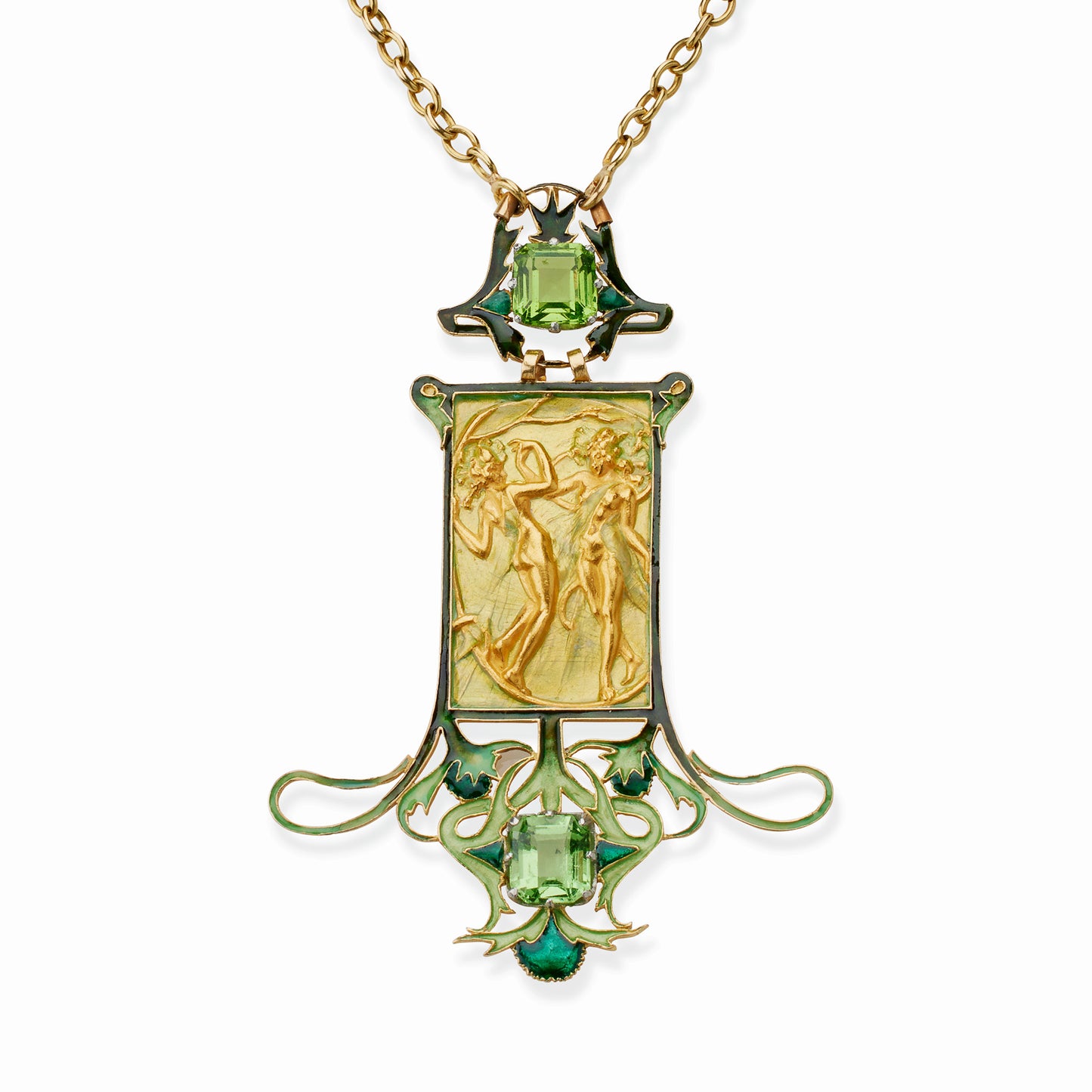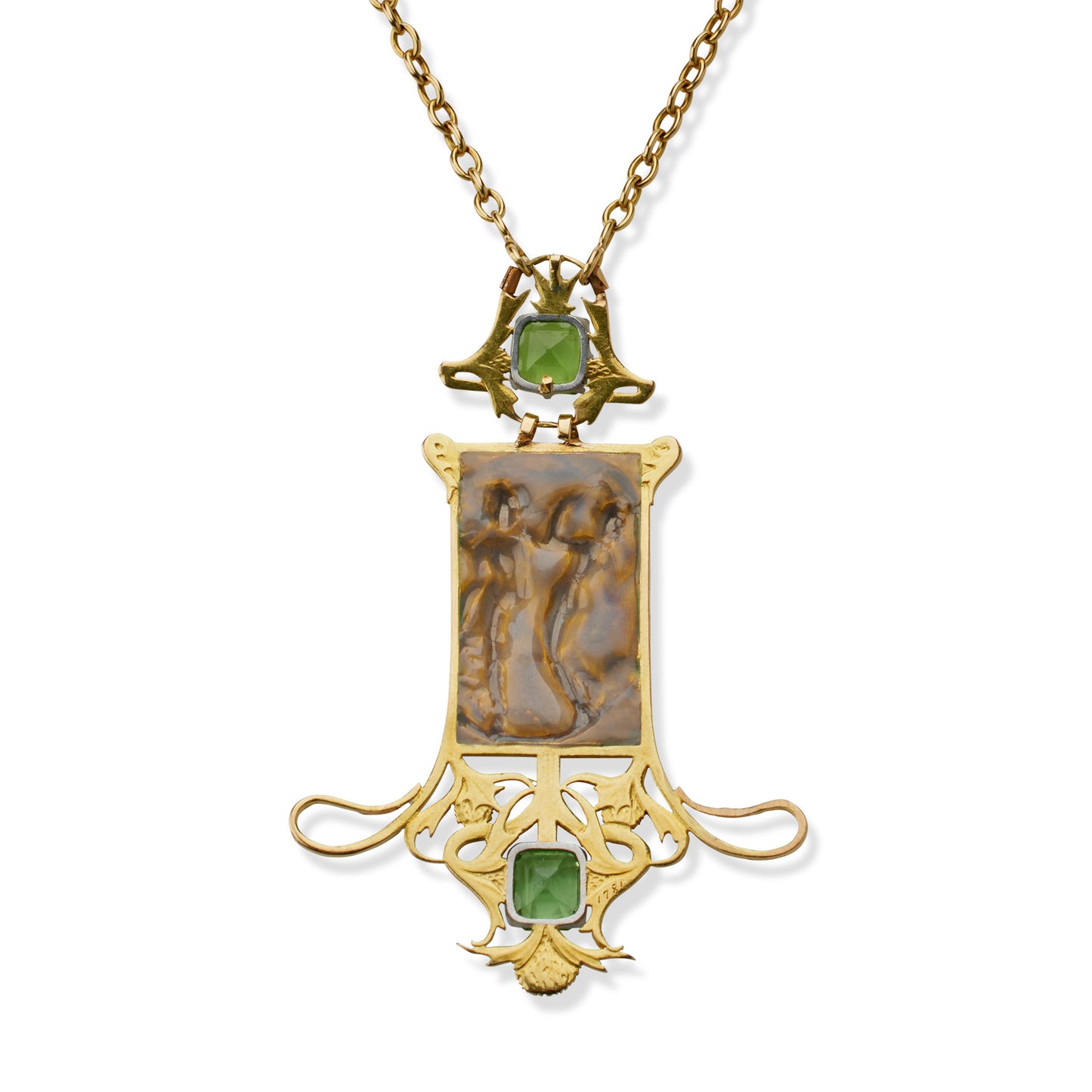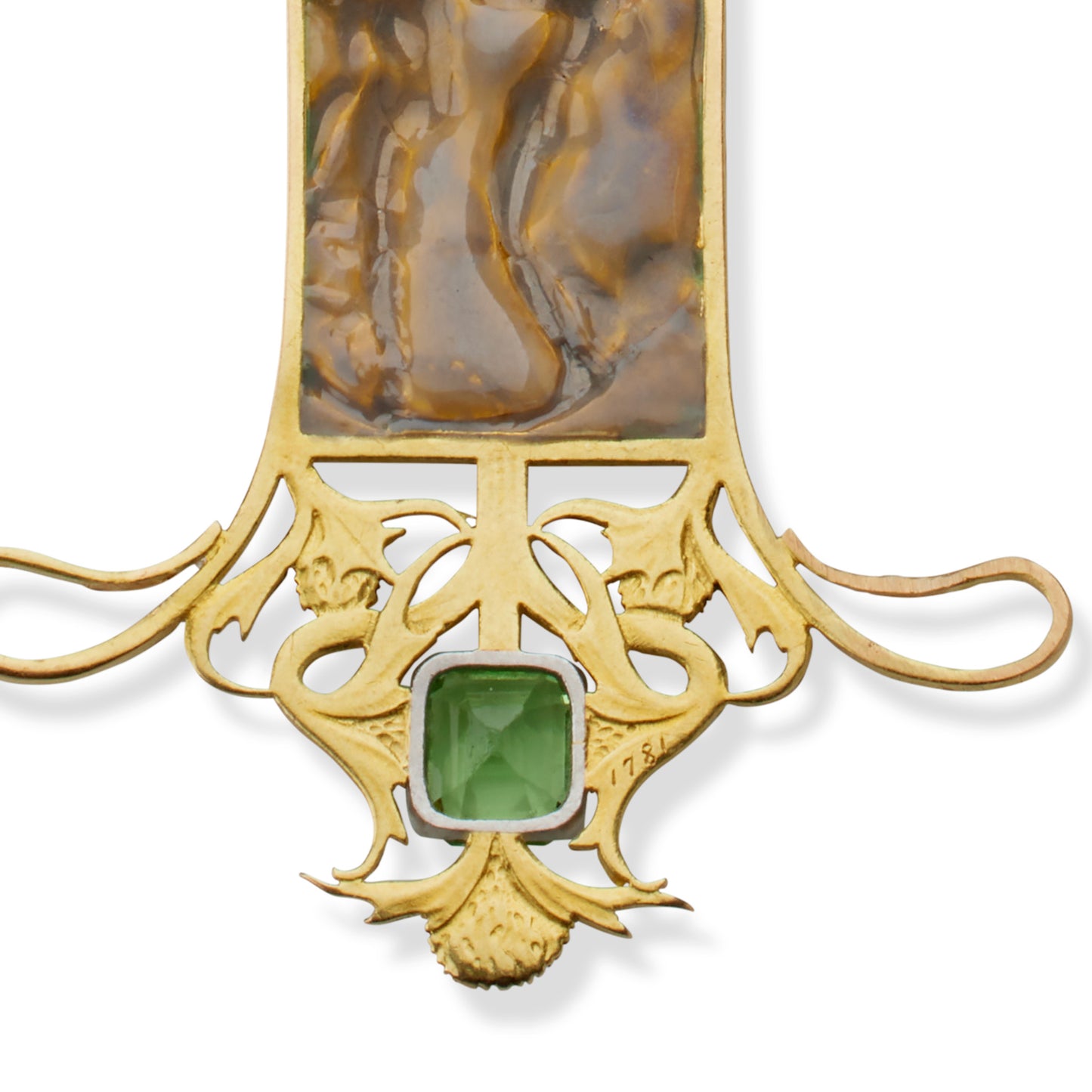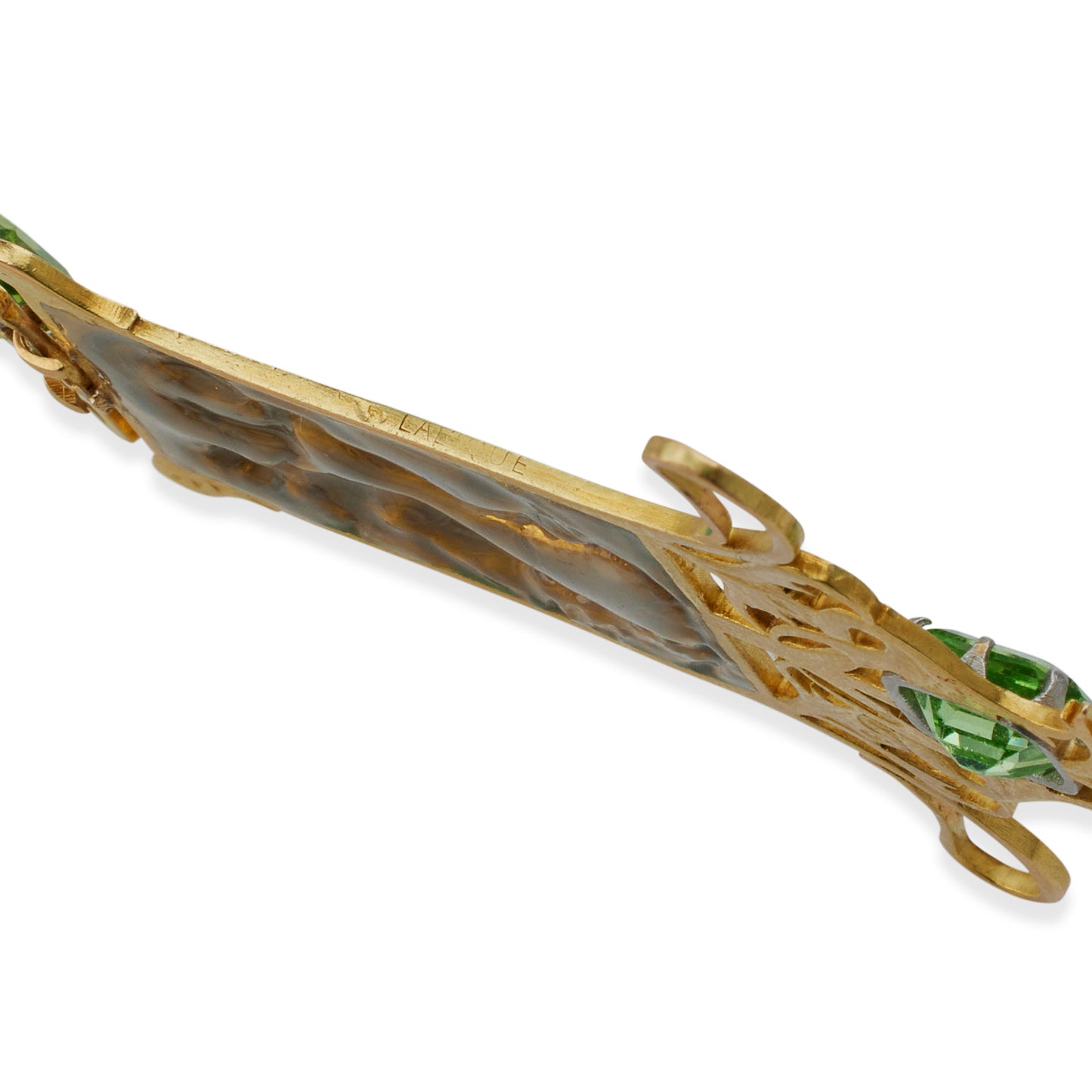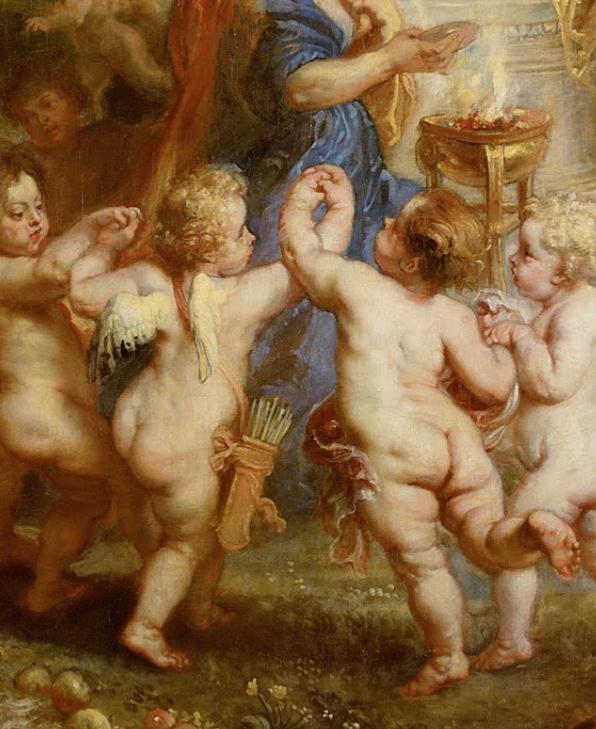René Lalique 18K Gold Peridot and Enamel Dancing Figures Pendant Necklace
Created around 1898-99 by René Lalique, this pendant necklace of "deux figurines dansant" is composed of champlevé enamel and 18K gold. The pendant is designed as a rectangular chased gold plaque depicting two figures in relief, against a background of pale green enamel, with hands interlaced as they dance in a circle, one partly veiled in en plein enamel, in a wooded glade, the reverse counter-enameled, within a frame of green thistle of Lorraine blossoms, seed heads, thorny leaves, and sinuous stems in shades of green enamel, highlighted by two step-cut glass accents, suspended from a later trace link chain. Celebrated in Roger Marx's 1899 review hailing Lalique as a "master French decorative artist", the dancer relief of this jewel personifies the spirit of nature, not only in the abstract, but in the artist's most beloved place, the woodlands and meadows of Eastern France.
Item #: N-21370
Artist: René Lalique
Country: France
Circa: 1898-1899
Materials: Enamel; 2 step-cut green glass accents; 18K Gold
Signed: LALIQUE 1781
Provenance: The Sanfilippo Family Collection
Literature: A similar jewel incorporating the figural gold pendant featured in this necklace appears in The Paris Salons, 1895-1914- Jewellery II, The Designers L-Z, p. 33. A now lost gold "projet de pendant" for the figures, within a modified surround, was illustrated in "Les Maîtres Decorateurs Français: René Lalique", by Roger Marx, Art et Décoration, July 1, 1899, p. 21.
Item #: N-21370
Artist: René Lalique
Country: France
Circa: 1898-1899
Materials: Enamel; 2 step-cut green glass accents; 18K Gold
Signed: LALIQUE 1781
Provenance: The Sanfilippo Family Collection
Literature: A similar jewel incorporating the figural gold pendant featured in this necklace appears in The Paris Salons, 1895-1914- Jewellery II, The Designers L-Z, p. 33. A now lost gold "projet de pendant" for the figures, within a modified surround, was illustrated in "Les Maîtres Decorateurs Français: René Lalique", by Roger Marx, Art et Décoration, July 1, 1899, p. 21.












